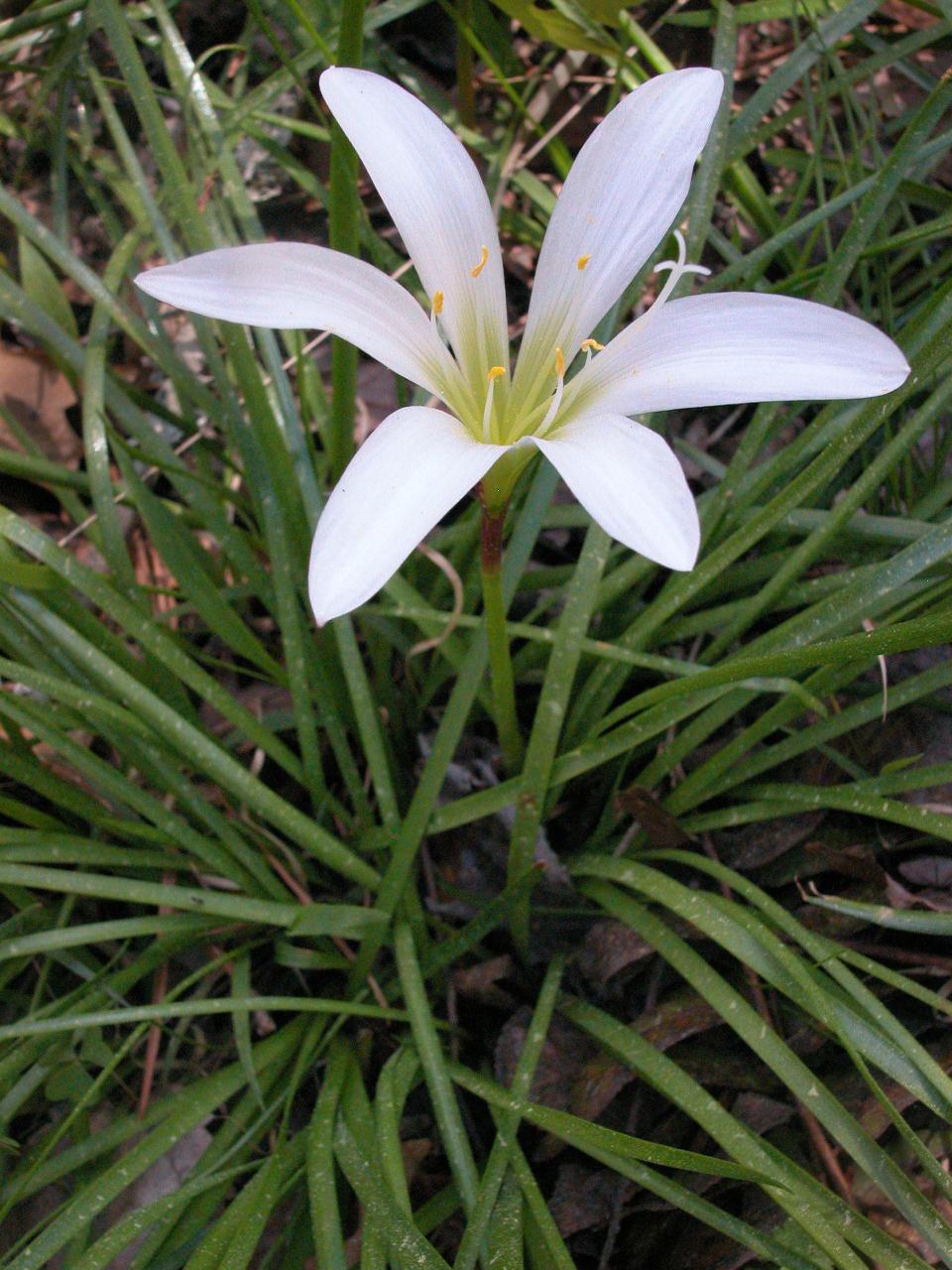This amaryllis family native puts out a showy bloom in spring | Mystery Plant
The amaryllis family is a large group of herbaceous species, many of them producing large bulbs, plenty of basal slender or strap-shaped leaves, and most with a tropical distribution, but a good many are native here in the Southeast. Many of these species have very showy flowers, and over the years have become highly popular in the trade with growers and gardeners.
Included in this family are the familiar amaryllis, daffodils, crinums, milk-and-wine lilies, spring snowflakes, and spider lilies. Interestingly, there is a lot of disagreement amongst modern botanists as to the relationship of the amaryllis family and the true lily family. One current trend is to combine both the amaryllis and lily families into one super family of several thousand species.

Rain lily, Atamasco lily, Zephyranthes atamasc, this week's Mystery Plant, is a native Southeastern member of the regular "old" amaryllis family. In fact, Carl Linnaeus first described it (he saw a specimen of it collected from Virginia) as a species of Amaryllis. It may be found growing from Mississippi to Florida, and as far north as Maryland.
It arises from a deep bulb, and produces a tuft of shiny green, grass-like leaves, grooved on one side, which are a foot or so long. (To me, the leaves feel like plastic.) The flowers are slightly fragrant, and produced singly on a long, hollow stalk. (There is no above-ground stem.)
Each flower is perfectly star-shaped, with six brilliant white perianth parts. Inside are the six bright yellow anthers, each atop a slender filament. The flower points straight up, rather than leaning. The flowers commonly become pink, or reddish, as they age. Eventually, a seed pod (capsule) is formed, which contains a number of black seeds.
This species is blooming now, and is reasonably common in a variety of settings. It likes to grow on wet ground, often near creeks, and on thick, mucky ground, often in shady thickets or in glade-like openings. It is a wonderful sight in the spring, frequently in spectacular displays, especially with a backdrop of golden butterweed and red buckeye.
I remember a botany field trip about this time of the year, way back when I was a senior at South Carolina: there were just a few weeks remaining before final exams, and we spent a glorious afternoon in the woods not too far away.
We all ended up in a magical place, really: a clearing within the forest near a boggy creek, with our Mystery Plant blooming like mad, hundreds of flowers gaping for the sky, and surrounded by clusters of violets, butterweeds, false garlic, and bluebells, the air dancing with sleepy craneflies and skippers. A magical place, and a magic time, away from homework and cramming.
There are two or three other species within this genus, too, which share its distribution; our Mystery Plant species is the most common. All of them are threatened with habitat loss, and because of this, these plants should never be picked, or collected from the wild, that is, dug up. They are hard to establish if you do dig them up: their bulbs are easily damaged during the process.
John Nelson is the retired curator of the Herbarium at the University of South Carolina, in the Department of Biological Sciences. As a public service, the Herbarium offers free plant identifications. For more information, visit www.herbarium.org or email johnbnelson@sc.rr.com.
This article originally appeared on Tallahassee Democrat: The rain lily is a Southern native amaryllis with a showy bloom
